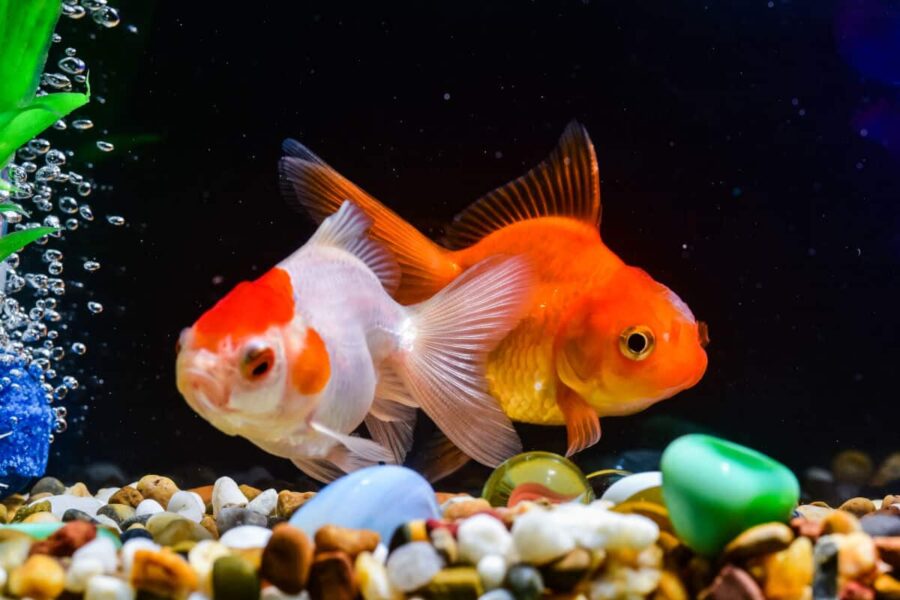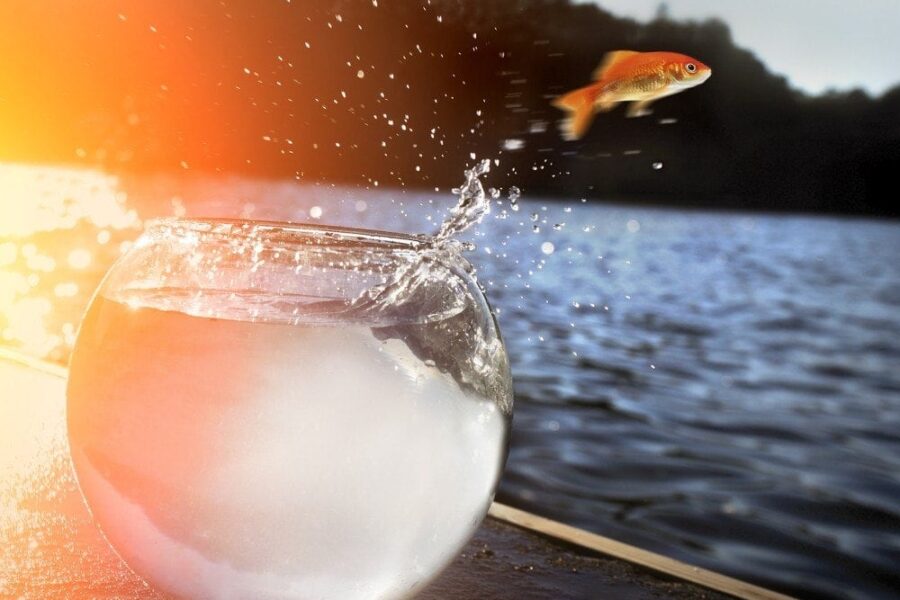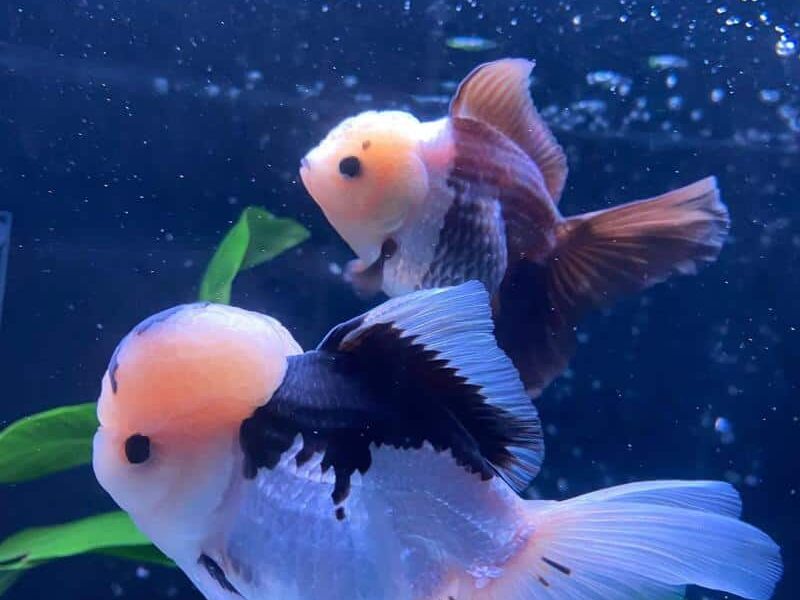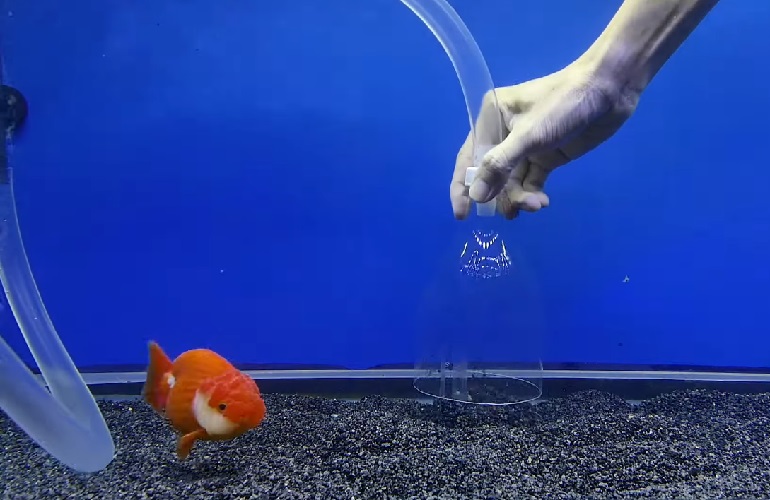
Ever made some water change mistakes and turned your serene goldfish tank into a fishy fiasco? You’re not alone! We humans might love a change of scenery, but our finned friends? Not so much.
But fear not, dear reader! We’re here to guide you through this watery minefield. In this easy-to-read guide, we’re diving (pun intended) into the most common water change blunders and how to avoid them. Get ready to become a water-changing wizard, ensuring your goldfish’s home is always the perfect aquatic paradise!
Understanding Why Water Change is Crucial
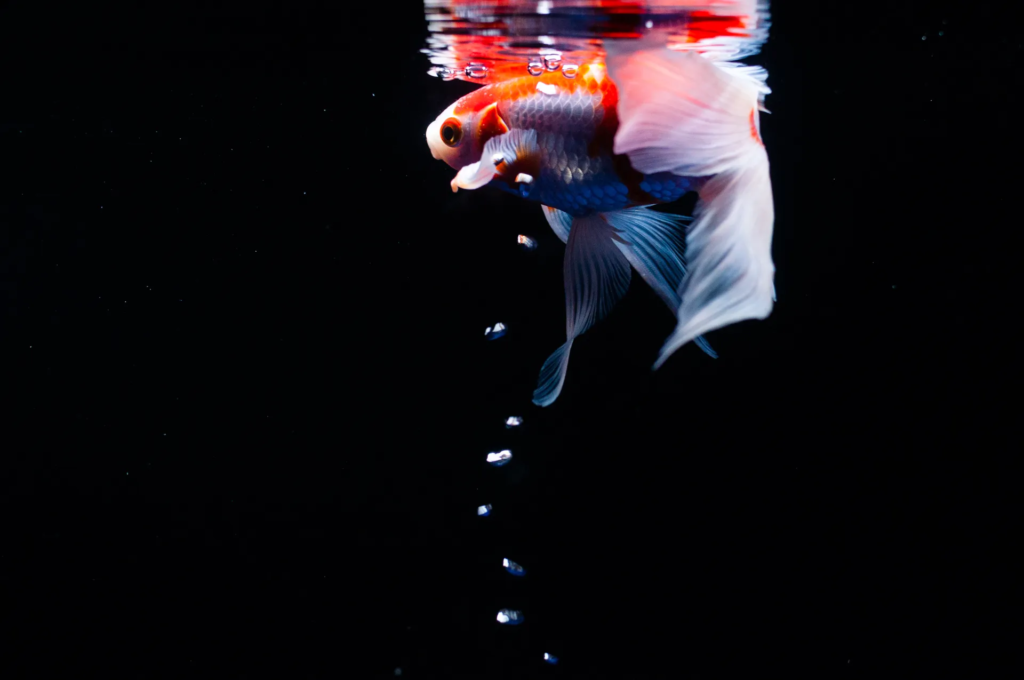
You might think, ‘hey, the water’s clear, why change it?’ Let me tell you, invisibility doesn’t equate to cleanliness, especially in a goldfish tank. Changing your goldfish’s water is as essential as taking the trash out of your house. It’s a fishy business, let’s learn why.
How Goldfish Pollute Their Environment
You know that saying, “don’t poop where you eat?” Unfortunately, goldfish didn’t get that memo. Yep, they are constantly eating, pooping, and breathing in their own water resulting in waste accumulation. This waste emits toxins which, if unmanaged, can harm or even prove fatal to your adorable aquatic buddies.
Understanding A Fish’s Nitrogen Cycle
Imagine the goldfish life as an underwater cycle of soap opera drama based on nitrogen elements. Let’s simplify: fish waste produces ammonia (the bad guy), which converts to nitrite (another villain), and then transforms into nitrate (the slightly less evil of the three). Although nitrate is less harmful, high levels are still a risk. Your role as the showrunner is to manage this cycle by timely water changes, ensuring the villains don’t take over!
Well, now that you know why changing water is a big deal, let’s dive into understanding your goldfish’s specific water needs. Remember, your goldfish is not just a decoration, it has needs similar to any other pet – or human, for that matter!
Getting to Know Your Goldfish’s Water Requirements

Before you dive headfirst into your goldfish’s tank (metaphorically, of course), take a minute to acquaint yourself with the water conditions that most goldfish find comfy. After all, you wouldn’t enjoy a dip in icy waters, right? Similarly, your goldfish have a preference for certain water conditions. Let’s explore them further.
The Ideal Water Temperature for Goldfish
First things first, let’s address one of the biggest myths about goldfish. Contrary to popular belief, these fish aren’t fans of ice-cold water. In fact, ideal Goldfish temperatures range between 65 and 75 degrees Fahrenheit. Yea, that’s right! Your goldfish might as well be vacationing in Miami all year round!
Dealing With pH Levels
But it’s not all sunshine and beachside cocktails for the humble goldfish. The pH level (or the acid-alkaline balance) of their water is crucial for their survival. Maintain a pH between 6.0 and 8.0 to avoid fishy frowns. Always remember, a lower pH means more acidity, and just like bad coffee, too much acidity can ruin your goldfish’s day (and health).
The Importance of Water Hardness
Lastly, we come to water hardness. While you might think “hard water” sounds like something out of a sci-fi movie, it’s actually a measure of dissolved minerals in the water. For goldfish, moderately hard water is just right. Think of it as their preferred beverage, a sort of underwater mineral cocktail. Too much or too little, and it could lead to Goldie feeling a tad under-the-gills.
Getting to grips with the specific water requirements of your goldfish doesn’t have to feel like you’re cramming for a chemistry test. It’s all about balance: the right temperature, the right pH, and the right hardness. Now that you have the basics down, let’s plunge into the murky depths of common water-changing mistakes. Because as they say, knowing is half the battle. The other half is avoiding accidentally turning your goldfish tank into a bubble bath (hint: not a good idea!).
Steering Clear of Water-Changing Blunders

We’ve all been rookies at some point in our lives, and for new goldfish parents, sometimes that inexperience can create a bit of a hot mess in the tank. Let’s dive in and tackle the top three bloopers beginners make while changing their goldfish’s water.
Oops Moment 1: Full Water Change?!
Seeing poop floating in your new tank might gross you out. You might get the urge to empty the entire aquarium. A big, fat, NOPE, don’t do that! Changing all the water at once can shock our goldfish buddies, as it disturbs their familiar environment instantly. Hint: partial water changes are your new superhero.
Oops Moment 2: Overlooked Dechlorination
Filling up your tank straight from the tap? It seems practical when you’re in a hurry, but it can be a colossal mistake. Most tap water contains chlorine, and here’s a spoiler: Goldfish are not fans of it. Using a dechlorinator before adding new water into the tank is vital. Forego this, and your goldfish might go on strike.
Oops Moment 3: Sporadic Water Change
Life gets busy, and schedules get messy. In the whirlwind of daily chores, the well-being of your goldfish should not get overlooked. Inconsistent water changes can lead to an unhealthy tank environment. Regular, smaller changes are the secret to keeping your goldfish giddy.
Now that we’ve faced these common goof-ups, it’s time for some redemption. In the following section, we’ll take a step-by-step, foolproof walk into the world of correct water changing. No more trial and error, you’re about to become a goldfish pro! Stay tuned.
How to Properly Change Your Goldfish’s Water
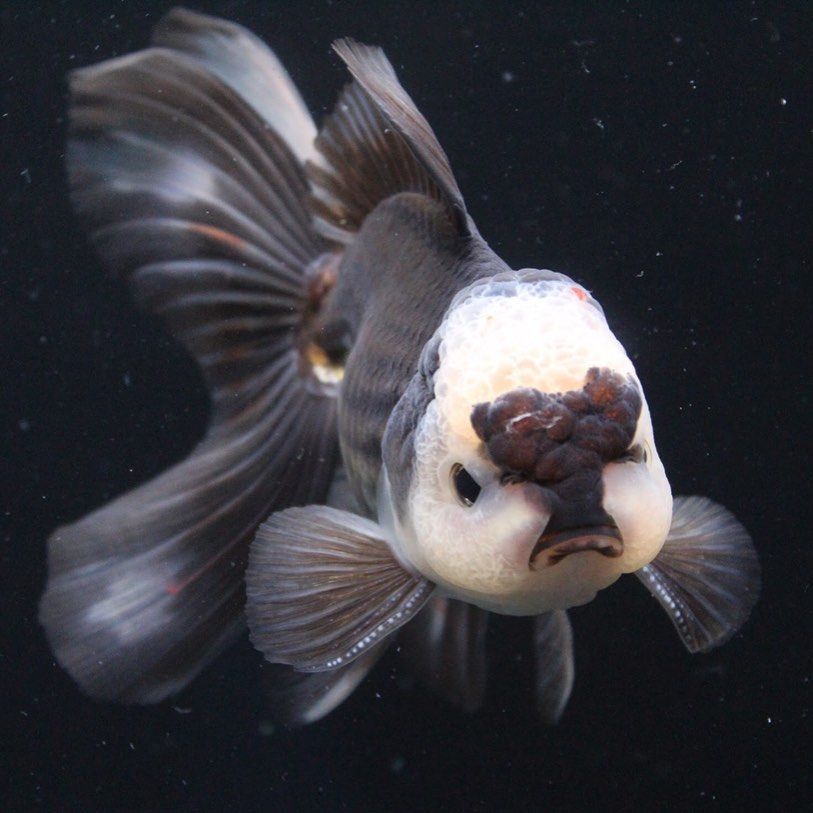
Now that we’ve got our scales wet with the common mistakes, let’s dive deeper into doing it right. Changing your fish water might seem daunting, but just like good comedy, it’s all about timing.
Step 1: Testing the Water
It’s important to regularly test your tank’s water. Think of it as a health check-up for your goldfish’s home. Be on the lookout for signs of nitrate, ammonia, and pH levels. These can help keep your finny friends happy and healthy. Now, let’s push the boat out and prepare the new water.
Step 2: Preparing the New Water
Here comes the science bit – but don’t worry, you won’t need a lab coat. Just a simple water conditioner to de-chlorinate tap water will do. Again, keep those temperature levels steady – you wouldn’t like a sudden cold shower, would you? No, you wouldn’t. Once the new water is ready, we move to the delicacy of gradual replacement.
Step 3: Gradual Replacement
This isn’t a magic trick but just as exciting! Replace only 15-20% of the old water. Yank it out and pour in the fresh H2O, bit by bit, slowly. Changing water shouldn’t feel like a tsunami for your fish. Take it slow and steady. But we aren’t done just yet. Time for the next step, top-secret fish monitoring.
Step 4: Monitoring Your Goldfish
Look, your goldfish won’t give a satisfied nod or a thumbs-up. So, you’ll need to watch for signs it’s happy. Are they acting natural? Swimming, playing, and not floating lifelessly? Good! Keep an eye out as new water can sometimes be a shock to their system. Now that you’re a pro at changing water, let’s discuss what to do when things go awry. Buckle up for the next section – ’what to do when something goes wrong’.
What to Do When Something Goes Wrong

Much like raising kids, even if we do everything right as goldfish parents, things can sometimes go awry. It’s in those moments that we need some assurance, a quick fix perhaps. In some cases, the solution might need expert skills. Let’s dive deeper, shall we?
Quick Solutions for Common Problems
Sometimes, despite your best efforts, your goldfish may flip sideways. Don’t panic; usually, it’s down to swim bladder issues. Try feeding them a diet with plenty of veggies and fiber, or, oddly enough, small cooked peas.
Your goldfish could exhibit strange behavior like hiding or exhibiting low energy. Maybe it’s just having a off day, or is it? Well, it could signify stress. Often, a simple water change and ensuring a suitable water temperature fix this.
If your goldfish refuses to eat, it might just need a change in diet. Try introducing a variety of foods. Stick to this rule, though: only feed what they can consume in 2 minutes.
Now that we’ve covered basic solutions, we’re off to serious territory where a call to an expert might be needed.
When to Consult an Expert
When amateur remedies don’t seem to help, a goldfish whisperer comes to the rescue. Yes, that’s your vet. Prolonged loss of color, open sores, or white spots definitely need professional attention.
So, there you go, folks. After all, just like we admin humans need routine doctor’s checks, our goldfish may need expert care too. Having a specialized vet inspect your fishy friend will ensure they’re bubbly and splashing for years to come.
Wrap Up
Navigating your goldfish’s ideal environment can be as potentially murky as the water they swim in! Understanding the delicate balance of their world – from the entrepreneurial nitrogen cycle goldfish maintain, their specific water requirements, to avoiding common mistakes during water changes – will ensure you avert an aquatic apocalypse.
Should problems arise, don’t let panic turn your thinking into a fishbowl. Being equipped with quick solutions for common problems and knowing when to consult an expert are like life buoys in an ocean of uncertainty. Proper care and attention to your finned friend’s water world benefits not just them, but also paints you as the Picasso of piscatorial stewardship!
Frequently Asked Questions (FAQ)
Question: Why is changing water in a goldfish tank important?
Answer: Changing water helps to keep the tank clean from waste and toxins that can harm the fish. It also replenishes essential elements goldfish need to thrive.
Question: What is the ideal water temperature for goldfish?
Answer: The ideal temperature for most goldfish is between 65 and 75 degrees Fahrenheit. Make sure to monitor the temperature regularly to avoid sudden changes.
Question: Why shouldn’t I change all the water at once?
Answer: Changing all the water causes sudden shifts in the tank’s environment, which could stress your goldfish. A gradual water change helps maintain the tank’s balance.
Question: What does ‘dechlorinating’ mean, and why is it necessary?
Answer: Dechlorinating is the process of removing chlorine from tap water, which is harmful to goldfish. Always dechlorinate new water before adding it to the tank.
Question: How often should I change the water in my goldfish tank?
Answer: It is typically recommended to change 10-20% of the water every week. However, this can vary depending on the tank size, number of fish, and their size.
Question: What should I do if my goldfish seem unwell after a water change?
Answer: First, test the water parameters to ensure everything is in check. If issues persist, consult an expert for further guidance.

